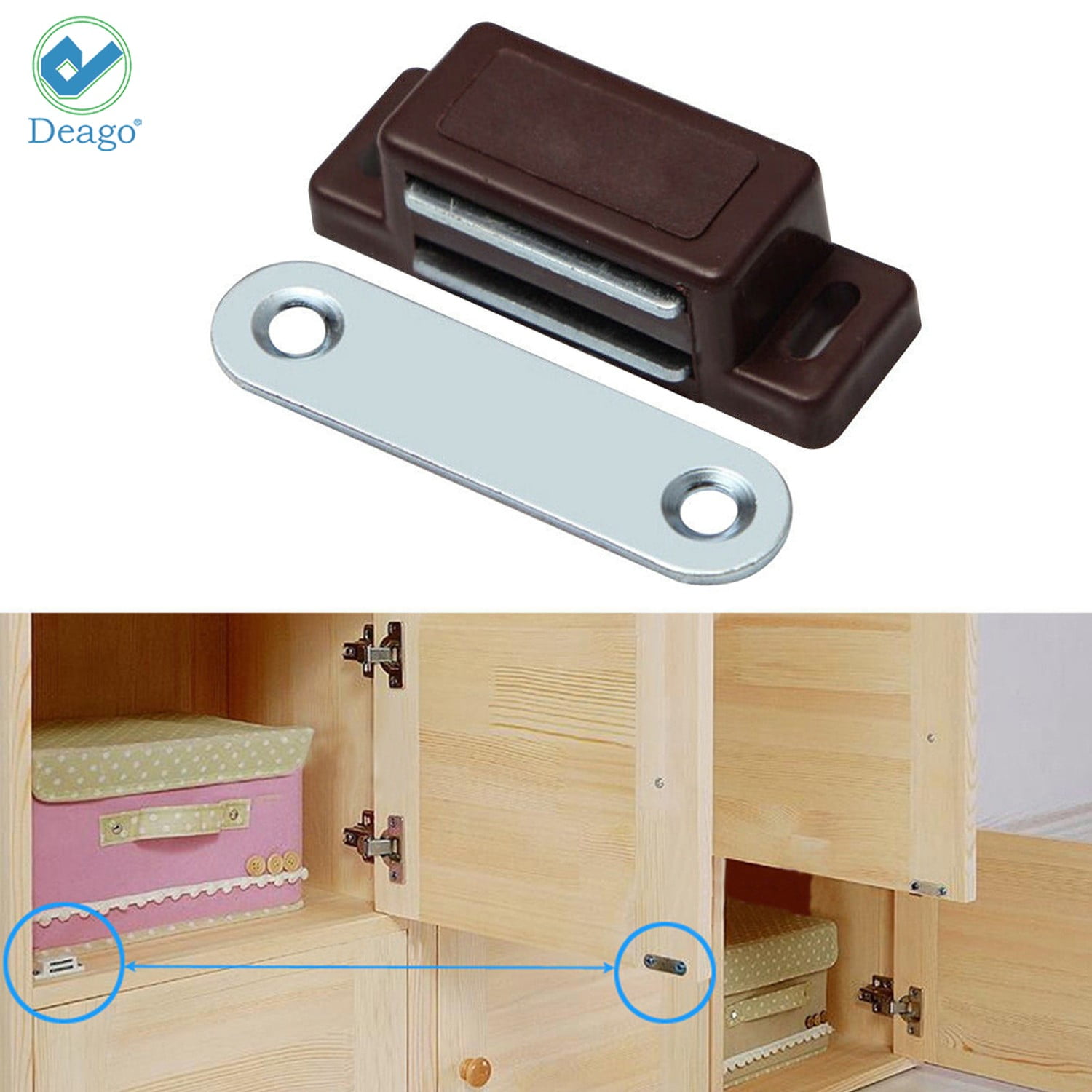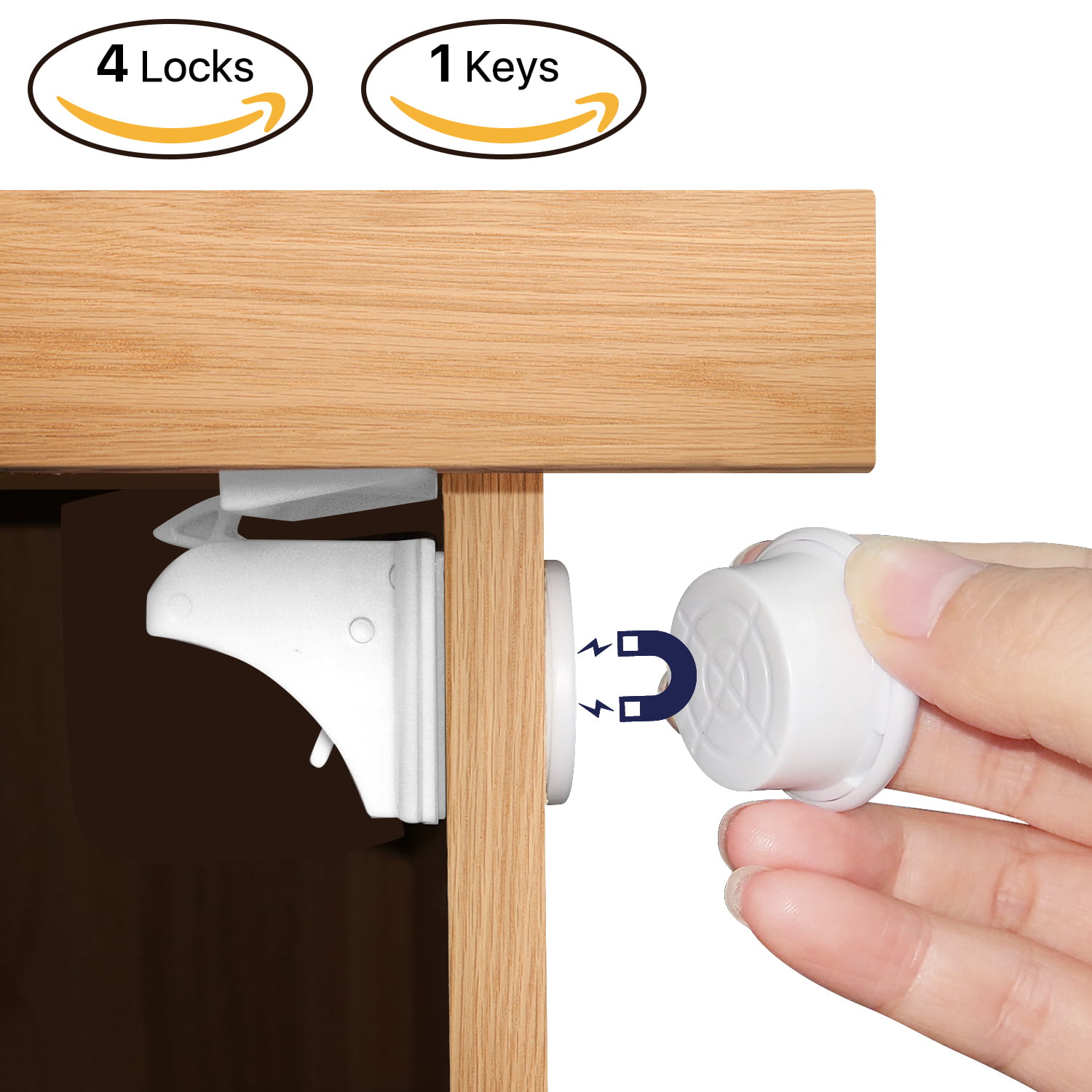Types and Features of Magnetic Cabinet Locks

Magnetic cabinet locks offer a discreet and convenient solution for securing cabinets and drawers, providing a range of functionalities suitable for various applications, from childproofing to high-security storage. Their operation relies on the attractive force of magnets, eliminating the need for noisy latches or complex mechanisms. This makes them particularly suitable for environments where quiet operation is paramount, such as libraries or hospitals.
Comparison of Magnetic Cabinet Lock Mechanisms
The performance and suitability of magnetic cabinet locks vary significantly depending on their design and construction. Several key factors influence their effectiveness and cost. The following table summarizes the characteristics of different types.
| Type | Strength (Holding Force) | Installation Method | Cost (Approximate) |
|---|---|---|---|
| Surface Mount | Low to Medium (5-20 lbs) | Adhesive or screws | $5 – $25 |
| Recessed Mount | Medium to High (10-50 lbs) | Requires cabinet modification | $10 – $50 |
| Mortise Mount | High (20-100+ lbs) | Requires significant cabinet modification | $20 – $100+ |
| Electronic Magnetic Lock | Variable, often high | Requires wiring and power supply | $50 – $200+ |
Features of Magnetic Cabinet Locks
Several features enhance the functionality and security provided by magnetic cabinet locks. These features cater to diverse needs and applications.
Magnetic locks for cabinet doors – Key features often include:
- Childproofing Mechanisms: Many magnetic locks incorporate designs that make them difficult for children to open, often requiring a specific action or tool to disengage the magnet.
- Adjustable Locking Strength: Some models allow for adjustment of the magnetic holding force, providing flexibility for different applications and cabinet weights.
- Keyless Entry Options: Electronic magnetic locks often integrate keypads or biometric scanners for secure, keyless access.
- Fail-Safe Mechanisms: In critical applications, fail-safe mechanisms ensure that the lock releases in case of power failure or malfunction.
- Tamper Resistance: High-security models often include features to deter tampering or forced entry.
Materials Used in Magnetic Cabinet Locks, Magnetic locks for cabinet doors
The materials used in the construction of magnetic cabinet locks directly impact their durability, aesthetic appeal, and overall performance. Different materials offer varying levels of strength, resistance to corrosion, and visual appeal.
| Material | Durability | Aesthetic Appeal |
|---|---|---|
| Steel (various grades) | High, resistant to wear and tear; varies with grade | Can be finished in various ways for different aesthetics (e.g., powder coating, plating) |
| Aluminum | Good durability, lightweight | Modern, sleek appearance; often anodized for corrosion resistance |
| Zinc Alloy | Moderate durability, susceptible to corrosion without proper finishing | Can be finished to mimic other metals |
| ABS Plastic | Moderate durability, susceptible to cracking or breaking under stress | Can be molded into various shapes and colors |
Maintenance and Troubleshooting of Magnetic Cabinet Locks: Magnetic Locks For Cabinet Doors

Proper maintenance and timely troubleshooting are crucial for extending the lifespan and ensuring the reliable performance of magnetic cabinet locks. Neglecting these aspects can lead to malfunctions, security breaches, and ultimately, the need for premature replacements. This section details best practices for maintenance and provides solutions for common problems.
Maintaining Magnetic Cabinet Locks
Regular maintenance prevents many common problems. A proactive approach ensures smooth operation and extends the life of your locks.
- Regular Cleaning: Dust and debris can interfere with the magnetic field and hinder proper locking. Use a soft, dry cloth to gently wipe the lock mechanism and surrounding areas at least monthly. Avoid harsh chemicals or abrasive cleaners that could damage the lock’s surface.
- Inspecting the Magnet and Plate: Periodically inspect the magnet and its corresponding metal plate for any signs of damage, misalignment, or excessive wear. Ensure the plate is securely attached to the cabinet door and the magnet is properly positioned to create a strong magnetic field.
- Checking for Obstructions: Ensure that nothing is interfering with the magnetic field, such as objects placed too close to the lock or items blocking the closing mechanism.
- Lubrication (If Necessary): Some magnetic locks may benefit from occasional lubrication of moving parts, but this is usually not necessary. Refer to the manufacturer’s instructions for specific guidance. Over-lubrication can attract dust and debris, causing problems.
Troubleshooting Common Issues with Magnetic Cabinet Locks
This table Artikels common problems encountered with magnetic cabinet locks and provides practical solutions for resolving them.
| Problem | Solution |
|---|---|
| Lock fails to engage | Check for obstructions between the magnet and the plate. Ensure the magnet and plate are clean and properly aligned. Verify the battery is properly installed and functioning (if applicable). Inspect for any damage to the magnet or plate. |
| Lock releases unexpectedly | Inspect for damage to the magnet or plate. Check for interference from nearby magnetic fields (e.g., other magnets or electronic devices). Ensure the magnet and plate are firmly attached. If the lock is battery-powered, check the battery level. |
| Weak magnetic force | Clean the magnet and plate thoroughly. Check for misalignment. If the problem persists, the magnet may be weakened and require replacement. |
| Loud clicking noise during operation | This might indicate a problem with the mechanism. Check for obstructions and ensure the magnet and plate are properly aligned. If the problem continues, professional servicing may be required. |
| Lock is completely unresponsive | Check the power supply (if applicable). If the lock is battery-powered, replace the batteries. If the problem persists, the lock may require professional repair or replacement. |
